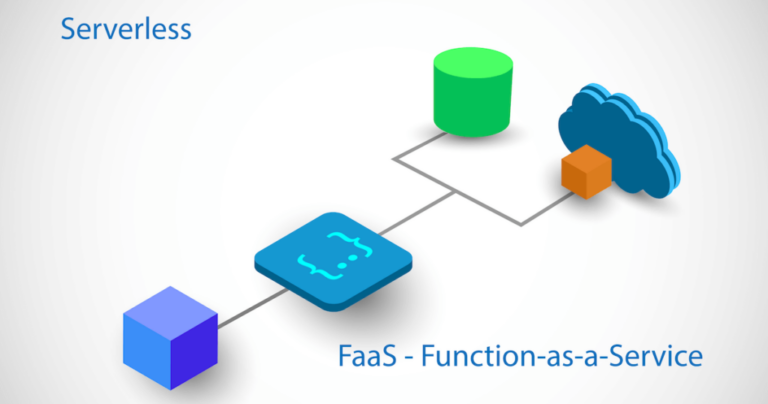Red Hat has a pool of production-ready products for professionals in the Linux world. Among them, one such product includes OpenShift – a container management tool or Red Hat’s version of the Kubernetes-based orchestration platform. You may be wondering why we are talking about OpenShift when Kubernetes is already there and allowing developers to do incredible things using it?
Let’s get a bit more curious on the question and find at the end of the blog posts what OpenShift could do to a software project, should you use it, and whether there is a comparison between OpenShift and Kubernetes or not?
What is Kubernetes?
To understand the role of OpenShift and how it differs from Kubernetes, first, we need to understand what Kubernetes is.
In a general definition, you may find Kubernetes explained as an open-source orchestration platform. The platform is also considered a de facto for container management. There are many reasons that made Kubernetes this popular including the efficiency of deploying applications by using Deployments, ReplicaSet, Pods, containers, and so on. Having all the features, developers easily have access to powerful properties a modern application requires such as high availability and scalability without having to implement it.
There are lots more things Kubernetes supports such as:
- Rigorous self-checking of servers and containers
- Allows you the freedom to take advantage of on-premises, hybrid, or public cloud
infrastructure and move workloads smoothly - Provides seamless integration with popular storage systems
- Scales and modify storage needs based on needs
- Intelligently choose the ideal container location
- Provides controllers to manage Ingresses or storage provisioners
- Provides plugins in the API Server for resource customization at creation time (E.g. Istio proxies)
This way, Kubernetes allows you to customize your path to product development via implementing resources and controllers to create new tools and workflows that better fit the application’s needs. In the end, Kubernetes has emerged as a kind of framework.
Now let’s jump to OpenShift and understand its role in software development.
What is OpenShift?
OpenShift is known to bring professional and production-oriented experience to engineers. OpenShift is a complete, enterprise-ready platform for developing applications with Kubernetes. It is a platform-as-a-service and is built using all the features and functionalities a developer needs to create modern applications.
The platform is fully integrated and included a number of open-source tools including:
- Prometheus and operation lifecycle management as a management tool
- Supports multiple languages such as Java, Python, Ruby, Go, Node, PHP, Perl, etc
- Compatible with Kubernetes container workloads
- Seamless migration to newer OS without rebuilding containerization orchestration
- Support from Red Hat’s world-class engineering team
With OpenShift, you can manage the application wherever you want since it is compatible with all – public cloud, virtualized environment, bare metal in your own data center, etc.
This compatibility allows you to use the same software stacks and automation tools you’re already familiar with, enabling you to reduce the learning curve while adopting and using Kubernetes.
When Should You Choose To Use OpenShift Vs. Kubernetes?
While the underlying scheduler and run times are basically the same between open-source Kubernetes and OpenShift, both are offering out-of-the-box solutions for different use-cases.
The fundamental differences between the two orchestration platforms are significant considerations for business.
- Support: Kubernetes being an open-source project does not support as much as the OpenShift user gets from the developers of Red Hat. Moreover, with OpenShift you get more hands-on guidance and sophisticated plug-in network solutions, whereas Kubernetes is third-party integrative.
- Templates: One of the significant contributions that contributed to Kubernetes popularity is Helm templates available with Kubernetes which are simple to use.
- Web Console: An easy-to-use user interface is crucial to effective cluster administration. With Kubernetes, you need to install its dashboard separately and then require kube-proxy and manually create a bearer token for the authentication to put it to use. With OpenShift, you get a login-based console that allows you to visually manage cluster roles and projects.
- Security: OpenShift offers fewer installation features and options. What underpins this is OpenShift’s focus on greater security controls. Red Hat’s container management platform is built with strong security policies in comparison to Kubernetes. You need to learn policies to grab specific privileges to work on OpenShift and deploy more apps. Both platforms share different authentication and authorization processes. Kubernetes developers have to put a lot of effort into setting up and configuring it. Red Hat’s product however comes with an integrated server and offers better authentication. However, both platforms allow authentication through role-based access control (RBAC).
- Deployment Approach: Developers use deployment objects for Kubernetes deployment. It could be done internally by implementing deployment objects by controllers and can be used to update pods. Kubernetes allows you to handle multiple and concurrent updates. OpenShift deployment is performed using the DeploymentConfig command. But the tool requires you to use dedicated pod logic since you can’t implement DeploymentConfig through controllers. Here it is important to note that DeploymentConfig doesn’t support multiple updates just like Kubernetes objects. But OpenShift’s DeploymentConfig brings other advantages such as versioning and triggers that promote automated deployments.
- Integrated Image Registry: With Kubernetes, you can set up your own Docker registry but it doesn’t provide an integrated image registry. Whereas OpenShift offers you an integrated image registry that is compatible with Red Hat and Docker Hub. You get access to the image registry console and can find more information about images and image streams to projects in a cluster.
- CI/CD: Both platforms allow you to construct CI/CD pipelines. However, neither platform helps with complete CI/CD solutions. You need to integrate both platforms with additional tools like automated testing and monitoring, and CI servers to develop your full CI/CD pipeline. However, the job is much easier in OpenShift as it provides a certified Jenkins container that you can put to use for CI server. This option isn’t available with plain Kubernetes. But you can use third-party tools such as CircleCI to build CI/CD pipelines with Kubernetes.
- Updates: It is possible to update existing Kubernetes clusters instead of rebuilding them from scratch on both platforms. However, both are different when it comes to updating schedules. You have to use the Red Hat Enterprise Linux package management system to update OpenShift to the new version. You don’t get alerts like Kubernetes. In Kubernetes, you can update to a newer version using the kubeadm upgrade command. But remember, you need to back up your existing installation before upgrading.
OpenShift vs Kubernetes: Use Case Comparison
If we look at Ret Hat’s OpenShift official page, it is clearly visible that the industries have to deal with strict security and compliance regulations and are their top clientele. Therefore, compliance-heavy apps such as government & military, telecom, or commercial banks can leverage a secure and stringent environment for their business with OpenShift. Red Hat’s container management platform is built for “greater regulatory-readiness” and helps you integrate GDPR and HIPAA compliance regulations easily, for instance.
The apps that need regular updates could make use of Kubernetes for its update-friendly system. Gaming and social spaces may utilize Kubernetes more extensively.
To Sum Up
OpenShift has been helping enterprises and organizations with container deployment long before Kubernetes came into the picture. While Kubernetes provides flexibility to developers, OpenShift provides many in-built components. Each has its unique features and benefits, making them a prominent option for application development and deployment in different use cases. Still, Kubernetes leads the way for being open-source and for the amazing deployment strategies enabling enterprises to roll in and roll back applications or updates in real-time without compromising user experience for their end customers.
Update yourself on how Kubernetes deployment strategies proved effective to manage production workloads and deployments in real-time-like environments.




